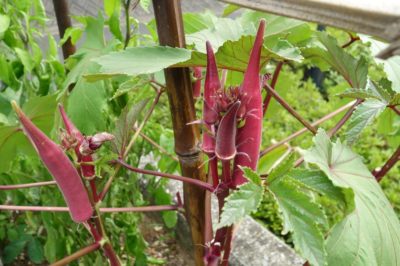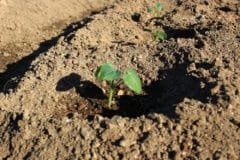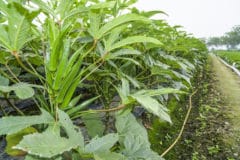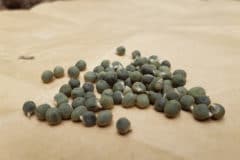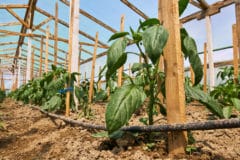When to Start Okra in Warmer Climates
If you live in a warmer climate, you have a nice long growing period for your okra. You can start it outdoors directly in your garden in the early spring as soon as the last frost date in your area has past. You should wait until nighttime temperatures remain steadily above 60°F (16°C) and soil temperatures are above 65°F (18°C).
In June, about the time those in cooler climates are planting their first crop, you can plant your second. Okra produces pods prolifically, but if you want to show off, you can keep planting successive crops throughout your growing season until about 50 to 60 days before the first frost date for your area. Your okra will stop producing when the first frost hits, so there’s no point to planting more when it could be hit by a frost just as it matures.
When to Start Okra Indoors in Cooler Climates
If you are starting your okra indoors, you should start it six to eight weeks before you want to transplant it outside.
As in warmer climates, you should wait to transplant your okra until about two weeks after the last frost date in your area. The soil temperature should have warmed to 65°F (18°C) while nighttime temperatures should have reached a steady 60°F (16°C) or warmer and daytime temperatures should remain steadily at 85°F (29°C) or warmer.
Sowing your seeds indoors three to four weeks before the last frost date in your area should time the seedlings’ growth so that they are ready for transplanting when weather conditions are right.
To start your plants:
- Use peat starter pots and potting soil for vegetables or herbs and vegetables.
- To help the seeds to germinate, use a file to nick the hard coating of each seed, or, to soften the coating, wrap the seeds in moist paper towels overnight or soak them for 12 to 18 hours before planting them.
- Sow two seeds in each pot.
- When the plants are 2 to 3 inches high, snip off the weaker of the two plants, leaving the stronger one.
- About an hour before transplanting your seedlings, water them thoroughly.
- To protect the taproot but encourage root growth, either carefully remove the pot while leaving the soil around the root in place, or else carefully make slits in the sides of the pot and then plant the seedling while it is still in the pot.
- Plant the seedlings about 1/2 inch deeper than they were when they were growing in the pot.
- Space the seedlings 18 to 24 inches apart with rows that are 2 to 3 feet apart.
Get an Early Start on Planting Okra Seeds Outdoors in Cool Climates
In cooler climates you can use cold frames or grow tunnels to get an early start on sowing your okra and other plants directly into the ground. When you use either a cold frame or a grow tunnel, you can plant your okra directly in your garden three to four weeks before the last frost date in your area.
Cold frames and grow tunnels are removable structures that work like small scale greenhouses. They create a space that keeps the air inside warmer than the air outside so that the growing season is extended by two to four weeks.
You can create a cold frame by laying old glass shower doors or old windows across the top of a frame made of bales of hay or lumber.
To create a grow tunnel, use copper or PVC piping to form an arch. Insert the ends of the pipe into the ground, and then cover the arch with 3-mil greenhouse-grade plastic. Weigh the plastic down with bricks or sandbags. While low grow tunnels are more common, you can create a high tunnel that is high enough to allow you to walk upright underneath it.
If you are concerned that a cold snap may allow temperatures to fall too far for a warm weather crop like okra, you can place sheets over your okra or add a floating row cover underneath a grow tunnel. You also can use 1-gallon milk jugs to warm low grow tunnels. Fill the jugs with water and place them in the tunnel in the morning so that they absorb warmth during the day. The absorbed heat is then released into the tunnel at night.
If you are concerned that temperatures might become too warm but it’s too early in the season to remove the protection of the cold frame or the grow tunnel, move the glass covering the cold frame or remove the weights at each end of the grow tunnel and lift up the plastic to allow air to circulate during the day, and then replace the plastic or the glass at night.
